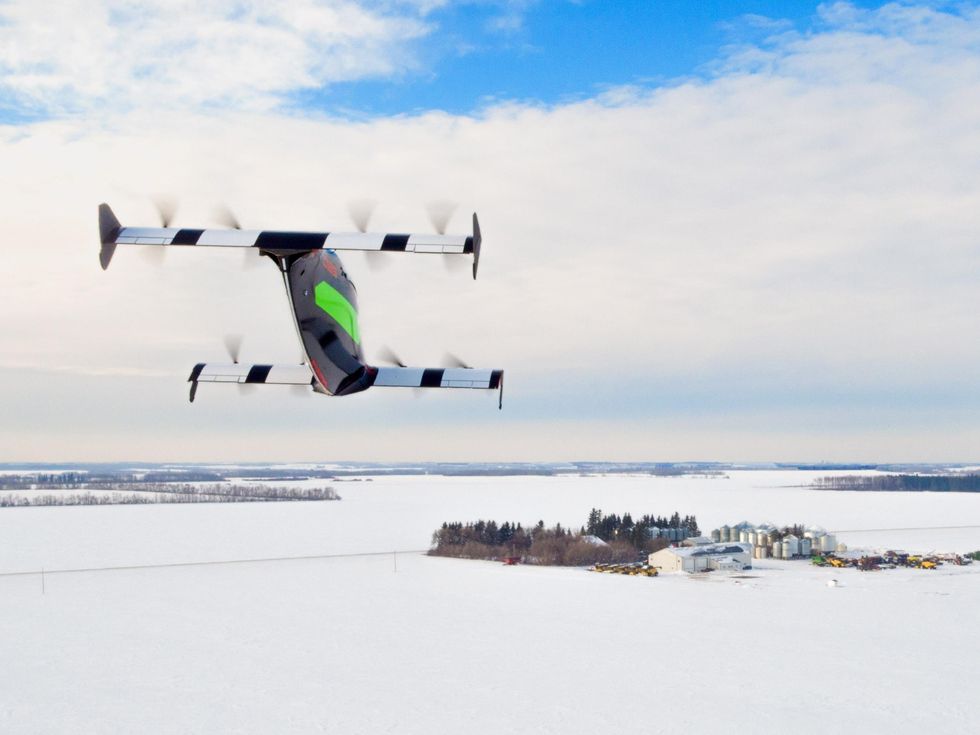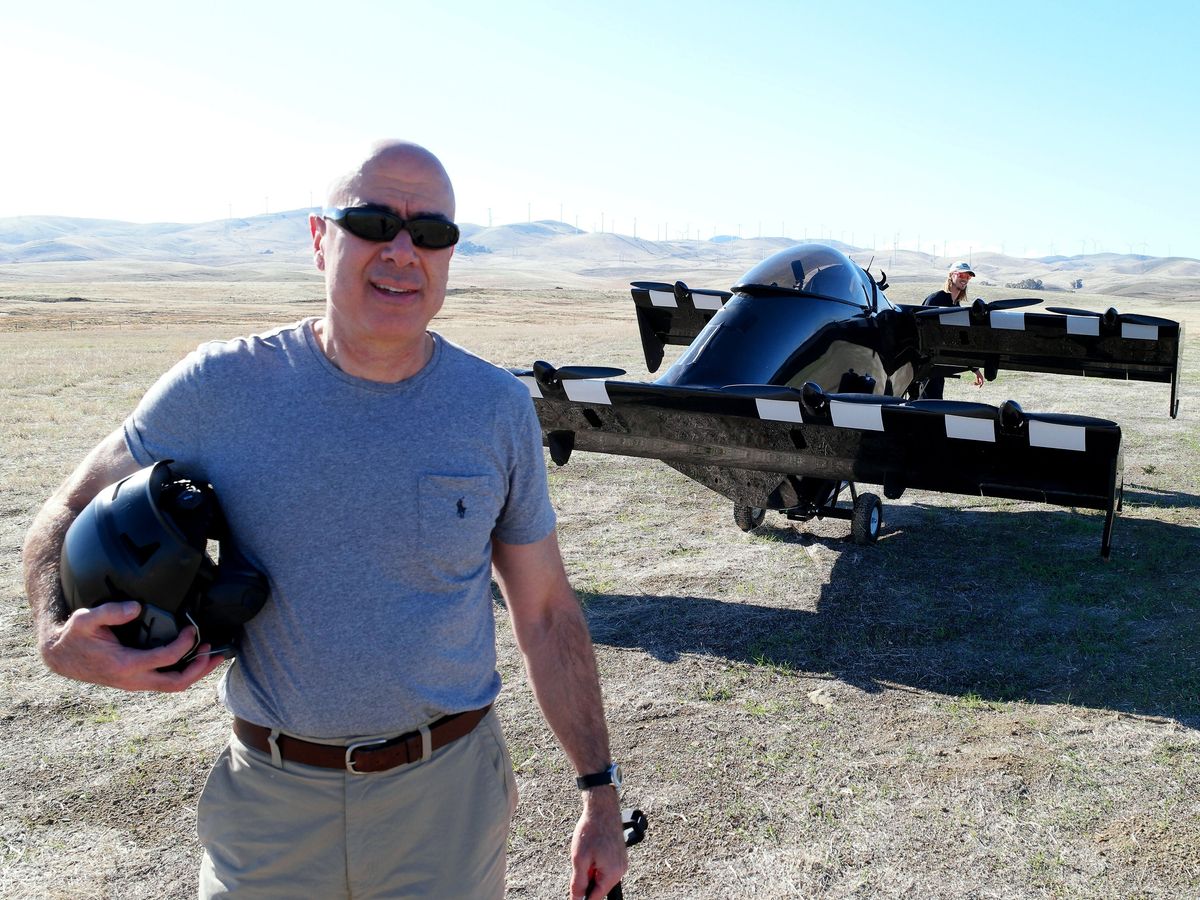On a gin-clear December day, I’m sitting under the plexiglass bubble of a radically new kind of aircraft. It’s a little past noon at the Byron Airport in northern California; in the distance, a jagged line of wind turbines atop rolling hills marks the Altamont Pass, blades spinning lazily. Above me, a cloudless blue sky beckons.
The aircraft, called BlackFly, is unlike anything else on the planet. Built by a Palo Alto, Calif., startup called Opener, it’s an electric vertical take-off and landing (eVTOL) aircraft with stubby wings fore and aft of the pilot, each with four motors and propellers. Visually, it’s as though an aerial speedster from a 1930s pulp sci-fi story has sprung from the page.
There are a couple of hundred startups designing or flying eVTOLs. But only a dozen or so are making tiny, technologically sophisticated machines whose primary purpose is to provide exhilarating but safe flying experiences to people after relatively minimal training. And in that group, Opener has jumped out to an early lead, having built dozens of aircraft at its facilities in Palo Alto and trained more than a score of people to fly them.
My own route to the cockpit of a BlackFly was relatively straightforward. I contacted the company’s CEO, Ken Karklin, in September 2022, pitched him on the idea of a story and video, and three months later I was flying one of his aircraft.
Well, sort of flying it. My brief flight was so highly automated that I was more passenger than pilot. Nevertheless, I spent about a day and a half before the flight being trained to fly the machine manually, so that I could take control if anything went wrong. For this training, I wore a virtual-reality headset and sat in a chair that tilted and gyrated to simulate flying maneuvers. To “fly” this simulation I manipulated a joystick that was identical to the one in the cockpit of a BlackFly. Opener’s chief operating officer, Kristina L. Menton, and engineer Wyatt Warner took turns patiently explaining the operations of the vehicle and giving me challenging tasks to complete, such as hovering and performing virtual landings in a vicious crosswind.
The BlackFly is entirely controlled by that joystick, which is equipped with a trigger and also topped by a thumb switch. To take off, I squeeze the trigger while simultaneously pushing forward on the switch. The machine leaps into the air with the sound of a million bees, and with a surge of giddy elation I am climbing skyward.
Much more so than an airplane or helicopter, the BlackFly taps into archetypal human yearnings for flight, the kind represented by magic carpets, the flying cars in “The Jetsons,” and even those Mountain Banshees in the movie “Avatar.” I’ve had several unusual experiences in aircraft, including flying on NASA’s zero-gravity-simulating “Vomit Comet,” and being whisked around in a BlackFly was definitely the most absorbing and delightful. Gazing out over the Altamont Pass from an altitude of about 60 meters, I had a feeling of joyous release—from Earth’s gravity and from earthly troubles.

For technical details about the BlackFly and to learn more about its origin, go here.
The BlackFly is also a likely harbinger of things to come. Most of the startups developing eVTOLs are building vehicles meant to carry several passengers on commercial runs of less than 50 kilometers. Although the plan is for these to be flown by pilots initially, most of the companies anticipate a day when the flights will be completely automated. So specialized aircraft such as the BlackFly—designed to be registered and operated as “ultralight” aircraft under aviation regulations—could provide mountains of invaluable data on highly and fully automated flying and perhaps even help familiarize people with the idea of flying without a pilot. Indeed, during my flight, dozens of sensors gathered gigabytes of data, to add to the large reservoir Opener has already collected during many hundreds of test flights so far.
As of late February 2023, Opener hadn’t yet announced a retail price or an official commercial release date for the aircraft, which has been under development and testing for more than a decade. I’ll be keeping an eye out for further news of the company. Long after my flight was over I was still savoring the experience, and hoping for another one.
Special thanks to IEEE.tv for collaborating on production of this video.
- Air Taxis Are Safe—According to the Manufacturers ›
- Finally, an eVTOL You Can Buy (Soon) ›
- Following the Money in the Air-Taxi Craze ›
- 3 Challenges to Solve Before We Can Commute by Air Taxi - IEEE Spectrum ›
- From Hockey Enforcer to High-Flying eVTOL CEO - IEEE Spectrum ›
Glenn Zorpette is editorial director for content development at IEEE Spectrum. A Fellow of the IEEE, he holds a bachelor's degree in electrical engineering from Brown University.



